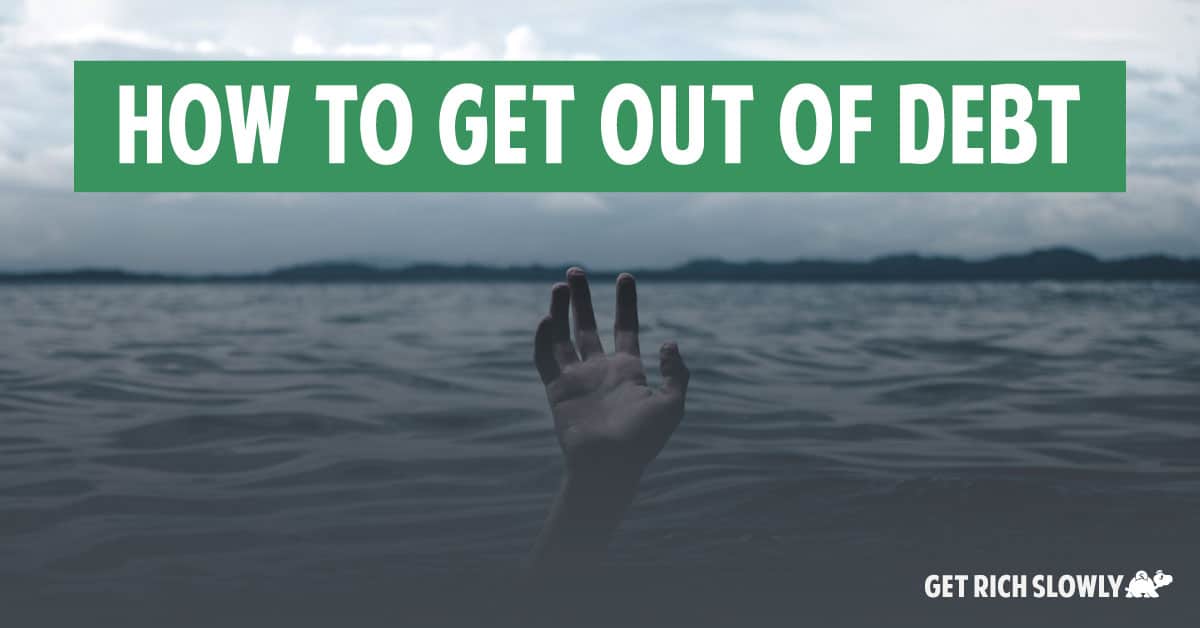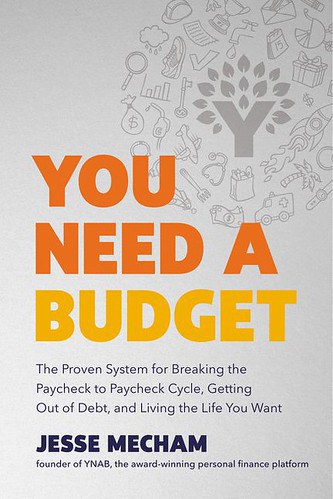How To Eliminate Debt (Without Tricks Or Games)

Today, as part of Back to Basics Month, let’s explore how You can eliminate debt without games or gimmicks.
After reading and writing about finances for twelve years, I have come to the conclusion that debt reduction should be a by-product and not an end goal. It is not a good habit to be in debt. Good Goals are not based on numbers, but rather actions. Restructuring your life to spend less than you earn will help you get out of debt. This is a natural result.
After all, I know that many GRS readers struggle to reach the starting point. ‘s primary goal is to get out of debt. That’s okay.
You can’t repay your debt until you earn more money. You must find a way to reduce your spending, and increase your income, before you can start repaying debt. Profits are earned by both businesses and individuals. When individuals make a profit for themselves, it is called “savings”.
You can (and must) prioritize debt reduction once you have a personal income.
Why you should pay off your debt
You can lower your score by paying off debt. This will save you money on rent, car insurance and future borrowing. Debt reduction is also one of the best ways to earn money.
The average return on investment in the stock exchange is about 10% per year. However, this return is not guaranteed. The market can be up 30% one year, and down 40% the next. You earn 20% guaranteed returns when you pay off your credit card (or whatever the interest rate is). It’s hard to beat.
Paying off debt has many benefits, both financial and non-financial.
- Simplicity. More debt, more bills. When you have an efficient, simple financial infrastructure, it’s much easier to manage money. You get closer to your ideal every time you pay a debt.
- Cash flow. When you pay off a monthly debt, that money can be used to fund other goals. This includes fun things like knitting supplies and ski trips.
- Freedom. If you are tied to your job by monthly payments, then you can’t take risks. You’re unable to take risks. You’ll have more options once your debts are gone.
- You can sleep better at night. You will feel less pressure and have fewer arguments with your partner about money.
When I tried to pay off my debts, I didn’t have a plan. In the absence of a plan, my extra payments went to a credit card after another. In the end, I didn’t seem to make much progress.
After I decided to be the boss of my life and take control of it, I began researching how to pay off debt. The “debt-snowball” strategy was recommended in many books. Despite my skepticism, I tried it. It worked. I was able to pay off my debts and start saving.
Stop accumulating new debt
It may seem obvious, but you are adding to your debt. Stop borrowing money. Do not finance anything. Your credit cards should be cut up.
This last one is a toughie. Do not make excuses. It doesn’t matter if other personal finance websites say you shouldn’t chop them up. They should be destroyed. You don’t need them.
- Credit cards are not necessary for safety nets.
- Credit cards are not necessary for convenience.
- Cash-back bonuses can be obtained without a credit card.
Credit cards are not necessary at any time. They can be a trap if you’re already in debt. You will only get deeper into debt. You can apply for a credit card later, after your debts have been paid off and you’ve gotten your finances under control. I don’t have a credit card. (I don’t miss carrying one.)
stop all recurring payments after you have destroyed your cards. Cancel your gym membership. Cancel your World of Warcraft subscription if it renews automatically. You can cancel anything that charges your credit card automatically. Stop using credit.
Call each credit card company one by one. You should not cancel any credit cards, except for those that have a balance of zero. Instead, ask for a better deal. Use a low-interest credit offer you find online as a bargaining tool. It’s possible that your bank will not match the competing offer, but they probably will. Asking never hurts.
Create an Emergency Fund
This is counter-intuitive for some. Why should pay off debt before saving for an emergency fund? You won’t be able to deal with unexpected expenses, if you do not save first. Do not convince yourself that you will keep a credit-card for emergencies. Save cash and destroy your credit cards.
How much money should you start saving? You should aim to save at least $1,000. College students might be able get by on $500. This money should only be used for emergencies. This money is not for beer. It’s not for shoes. It’s not for a Playstation 3 This is for when your car breaks down or you break an arm playing touch football.
Do not tie your emergency fund up to a credit card. Avoid making it too easy to spend your money on things that are not essential. Consider opening an on-line savings account. You can transfer money into your checking account in case of an emergency. You can use it when you want, but not spontaneously.

Debt Snowball
The debt snowball is a method where you put aside a certain amount of money each month in order to pay back the money that you owe. At first, the progress is slow. Over time, progress becomes rapid, like a snowball rolling downwards.
Step One
List your debts. Include the amount owed, the interest rate and the minimum payment for each obligation. Sort the list in order of the highest interest rate at the top. Then, the next debt will have the second-highest rate. And so on until you get to the last debt, which has the lowest rate.
Here’s a list of all my debts in October 2021 ordered by interest rates:
- Computer Loan: $1116 at 15% ($48 Min)
- Business Loan $2800 at 11% (30 min.
- Home Equity Loan $21000 at 6% (Minimum $100)
- Car Loan $2250 at 5% (170 min.
- Personal Loan $1600 at 3% ($100 minimum)
- Personal Loan $6430 at 0% (60 min.)
I owed $35,196 and made minimum payments of $508 a month.
Step Two
After listing your debts, determine how much money you can pay each month toward them. It should at least be the sum of your monthly minimum payments ($508 for the example above), but ideally more. In my case I began by allocating $700 per month to debt reduction.
Step Three
Make minimum monthly payments for all your debts except that with the highest rate of interest. Spend the remaining money that you have set aside for debt reduction on the debt with highest interest rate.
My list of debts was topped by the computer loan, which had an interest rate at 15%. The combined minimum payment for all the debts was $460 per monthly. In this plan, the remaining $700 that I had allocated to monthly debt reduction would be applied to the computer loan. Instead of paying the minimum $48 payment, I would pay $250.
Step Four
Repeat the process each month until all debts are eliminated.
Step Five
This is where the method becomes powerful. After you’ve paid off your first debt, don’t spend your increased cash flow on new purchases. You use the extra money to pay off the next debt in your list.
For example, if I begin by paying $700 per month toward my debt, I will continue to pay $700 each month toward the debt until it is all gone. After I have paid off the computer loan, I will focus on the business debt. The minimum payment for my other debts is $430. I can pay $270 per month to pay the business loan.
After the business debt was gone, I would then pay $370 per monthly to the home equity loan. I would end up with just one loan, the $6430 personal debt at 0%. I would use all $700 each month to pay off this debt.
Cons and Pros
The debt snowball can be very effective. It’s the most effective way to eliminate debt, but there’s a problem.
You’ll end up paying less in the long term if you pay off your debts starting with the highest interest rates. Many people, including myself, find it difficult to get by. My home equity loan was the third item on my list when I hit the wall. It would take many years to pay off that $21,000 balance. I don’t have the patience to wait that long.
I was fortunate to learn that there are other ways of arranging your debts. It’s not necessary to start with the high rates of interest.

Snowball Building: A Better Snowball
Humans are complex, psychologically-complex creatures. They are not adding machines. We all know what to do, but it’s hard to make the right choices. If we were adding machines we would never have accumulated consumer debt. It is a mistake to tell someone who has accumulated a lot of debt that they MUST adhere to a repayment plan which minimizes interest. It is important to create a system that rewards positive behavior.
Many people choose to use slight variations of the debt snowball method. These methods are based on psychology and do not use math.
Dave Ramsey’s Debt Snowball
Dave Ramsey, a financial guru, has popularized a variation on the debt snowball. He suggests that instead of ordering your debts according to interest rates, you should attack the highest balances in order.
If I used Ramsey’s method to order my debts, they would look like this:
- Computer Loan: $1116 at 15% ($48 Min)
- Personal Loan $1600 at 3% ($100 minimum)
- Car Loan $2250 at 5% (170 min.
- Business Loan $2800 at 11% (30 min.
- Personal Loan $6430 at 0% (60 min.)
- Home Equity Loan $21000 at 6% (Minimum $100)
In the same way as the traditional debt snowball method I would make the minimum payment on every debt , except for the one at the top of the list. To it, I would throw all the money I have set aside for debt reduction every month. After the debt with the highest balance was paid off, I would move onto the next lowest.
Ramsey’s method isn’t quite as fast as paying off high-interest debts first. In the end, you will lose a little more in interest payments. In my case, it took an extra month for me to pay off my debt. I also paid $841.15 more in interest. This method has a psychological benefit.
You can get a mental lift by tackling your smallest debts. This boost in motivation will encourage you to continue attacking the debt. You will feel a sense of accomplishment every few months when you cross another debt off your list. Ramsey is right when he says that this method relies on “behavior change over math”. When I paid off my $35,000 debt in 39 month, I used this version of the debt snowball.
Adam Baker’s Debt Tsunami
Some experts, like my Adam Baker, from Man vs. Debt suggest a third option they call The Debt Tsunami. According to them, it is best to pay your debts according their emotional impact. They say to pay off your debts in order of emotional impact.
Baker explains, “I was addicted to gambling and I had debts that were specifically related to gambling. Paying off that debt first changed my life. Paying off $600 on my credit card was fantastic, but it did not change me. It did not mean that my life would be different or that I would live in a new way.
Baker’s gambling debt was important to him and he attacked it first.
Another example: many people borrow money. The interest rates on these loans might be as low as two or three per cent (or they may even be interest-free), but the psychological burden is still there. It makes sense in this case to pay off low-interest debts first, because they offer such great non-financial benefits.
Paying off debts in the right order is the most important part.
Repaying low-interest loans is less important. Businesses borrow money at low interest rates to earn higher returns in other areas. The same is true when you take out a low-interest mortgage (such as three percent) or use school loans to further your education. You should repay your debts, but you can also make the repayment of your mortgage a longer-term goal.
Supplementary Solutions
While you are working on these steps, you can also do other things to improve the financial situation.
To pay off debt or save money or accumulate wealth, you need to spend lower than you earn.
Reduce your spending. Retrain yourself to be frugal. Most college students know all about frugal living. The archives on this website have some excellent ideas. Check out Frugal For Life.
while you are working to reduce your spending, do everything you can to boost your income. If you can, try to sell a few of the things you bought while you were in debt. Take on an additional job. Don’t forget to study. The most important thing is to study.
You can also borrow Dave Ramsey’s Total Money Makeover from your local library. This is not a book to be dismissed because of the title. It’s a great guide for getting out from under debt and establishing good money habits. It’s not just because I love it, but also because it helped me so much with my personal finances. You can return the book and borrow another one about money after you finish it.
Simple is not easy
Humans are complex beings. Some of us have a high level of logical reasoning. Some of us have a strong emotional side. We all fall somewhere in the middle. We seldom make decisions that are optimal; instead, we often choose the path that makes us the happiest over the short-term. This is not to say it’s the right thing — I’m just saying what happens. It can be hard to change the behavior of those who make decisions based on emotions.
It’s like saying running a marathon was easy, so why couldn’t everyone run one. We all know how to train for a marathon – eat well and run hard – but very few have the mental strength and dedication to finish one. With a little hard work and discipline, you can finish a 10k.
The same is true for personal finances. To build wealth you need to spend less than what you earn. But it is another thing to actually do this, especially in the long run. Building wealth can be more challenging than running a race. It takes months to train for and complete a marathon. It takes a lifetime to develop a sound financial plan.
We would all be wealthy if personal finance was as easy as knowing the math. It’s not. We’re not. Any small financial win is important to me. This is why I maintain this website and share any tips I can.
I always say , “do whatever works for you”. Some people can succeed by paying off high-interest debts first. Some people, including myself, have been successful only after trying a different approach. This approach might not be the best mathematically, but if it helps you achieve your goals then I think that’s better than a method that doesn’t.
Although personal finance concepts are easy they don’t make them simple. I’m not trying to suggest that they are. I had to work hard (and have a bit of luck) to pay off my debt. It wasn’t quick or easy.
The Bottom Line
I said at the beginning that I believe debt repayment is an effect, not a purpose. It shouldn’t be your main goal.
You will naturally be able to pay off your debt if you follow my other recommendations, like creating an individual mission statement or increasing your profit margin. You’ll also enjoy an advantage that many people do not have when their debts are paid off.
Many people are lost after they have paid off their debt. You’ll find a lot of conversations and questions about the next step if you search online. They had a purpose in debt repayment, but that purpose has now disappeared. They lose their financial direction as a result. Like dieters who have aimed to lose weight rather than change their lifestyle, a few newly-debt-free people find themselves returning to bad habits.
You’ll be able to get out of debt if you are pursuing other goals, and building good habits. Once you are out of debt, you will enjoy the benefits: The debt snowball that you have been building will become a Wealth Snowball.
Congratulations! Congratulations!
You have you ever been in debt? What were your methods? What methods were more effective than others? Would you do anything differently if you could go back and try it again? What advice would give to someone who has just become the money boss of their life?










+ There are no comments
Add yours